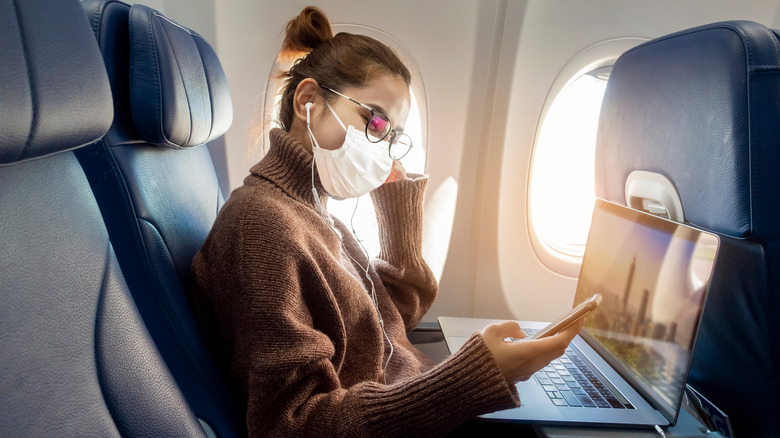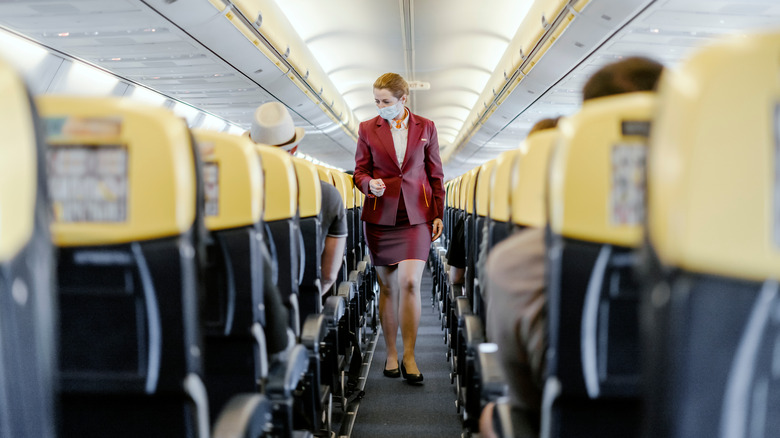Is One-Way Masking Still Beneficial While Traveling?
Now that the White House's federal mask mandate on airplanes and public transportation has been overturned, many travelers are wondering if one-way masking — when one person in an environment or enclosed space is masked while others are not — can still provide sufficient protection against COVID-19 (via CNN). While the U.S. Department of Justice (DOJ) is expected to appeal the decision, many Americans have already stopped wearing masks on airplanes, leaving immunocompromised passengers and unvaccinated children at an increased risk of contracting the virus and experiencing severe illness and hospitalization.
Despite the lifted mandate, however, experts are still urging Americans to keep their masks on while traveling on public transportation. According to Chris Cappa, a professor of civil and environmental engineering at the University of California, Davis, wearing a mask is still the best way to protect yourself from COVID-19, aside from immunization (via CNN). That's because masks act as a barrier between virus-carrying particles and your nose and mouth. However, the exact level of protection depends on the quality of the mask and the number of people wearing them in an enclosed space, says Cappa.
One-way masking is beneficial but less effective
Although masks work best when everyone is wearing them, one-way masking can still provide some protection against the disease, especially if you're using a high-quality mask. According to The New York Times, experts recommend wearing N95, KN95, or KF94 masks to help protect yourself against highly transmissible strains of COVID-19, like the Omicron subvariant BA.2. However, masks aren't the only variable at play when you're traveling on public modes of transportation. Your level of protection also depends on how well a space is ventilated and your risk of exposure (via The New York Times).
While high-efficiency particulate air (HEPA) filters are effective at reducing transmission on airplanes, they don't entirely eliminate the risk of infection, especially if a passenger has already contracted COVID-19. In fact, a March 2022 study published in the Journal of Air Transport Management found that passengers sitting a row away from someone infected with COVID-19 had a high risk of infection. Wearing a mask, however, reduced the risk of transmission by 54%. At the end of the day, one-way masking is still beneficial while traveling on public transportation, but it is ultimately less effective than universal masking.


